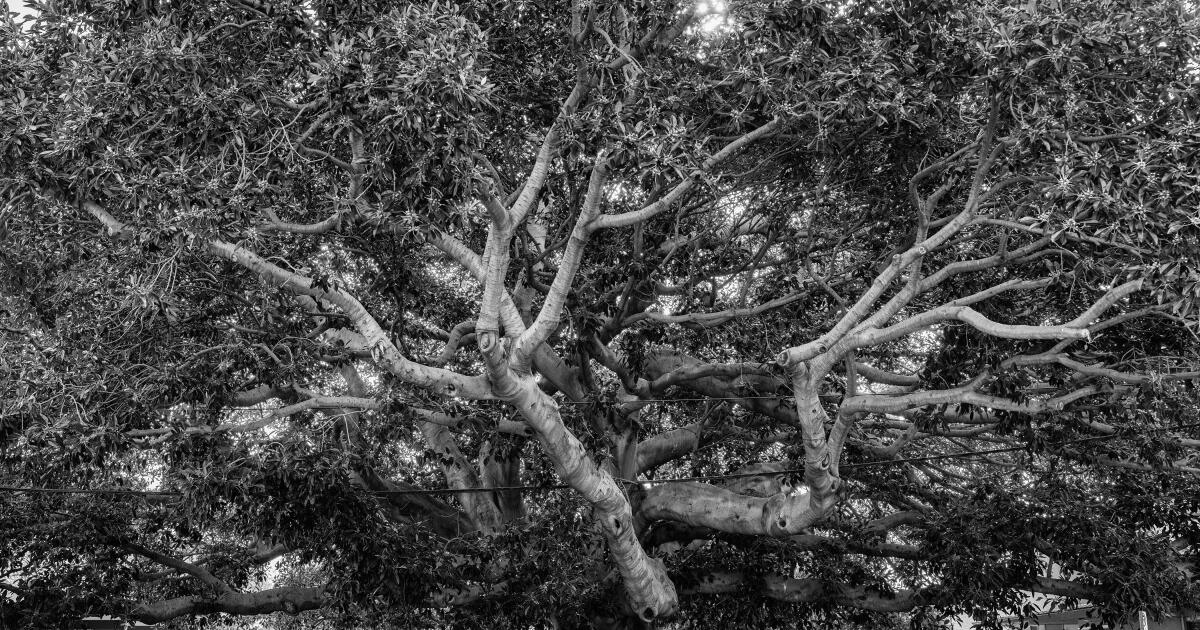Matthew Teutimez, a biologist and member of the Kizh Kitc Gabrieleños tribe, explained to me why it is that sycamores are so special, “a particularly special tree to symbolize locations for ancient people here in Southern California,” he said. “So much of our landscape is low-growing scrub, and back before the buildings, looking out on the horizon, you’d see the topography, the hills, the mountains, the tree canopies. But the way sycamores grow, they grow to be singular, next to water, growing up like a beacon.”
The trees were markers of significant locations, Teutimez said: villages, mostly. And later: burial grounds. “The fact that it’s a hardwood, too, means sycamores provide us with a whole other slew of gifts: They were utilized in the funeral pyre, they were the wood that sends you on to the next part of existence, so part of them becomes part of you.” Also for music. “Many folks have a misunderstanding that every Native American group had drums, but we didn’t have drums in Southern California, because we didn’t have the animal skins for drums,” Teutimez continued. “But what we did have was sycamore. And what you can do with sycamore is an instrument made out of two sycamore bowls. You make two bowls out of the wood of two different diameters. The big bowl, you fill with water, and the smaller bowl goes down into water, making a little round dome. You get a soft mallet, and bang on it, and the reverbrance out into the water is like a bass drum, a guttural, whomp whooomp whooomp.”
The tree’s uses go even beyond all this: “It can even take care of you in the spring,” said Teutimez. “Its new leaves are some of the most soft velvety and strong material you could ask for, if you’re ever out of toilet paper.”

